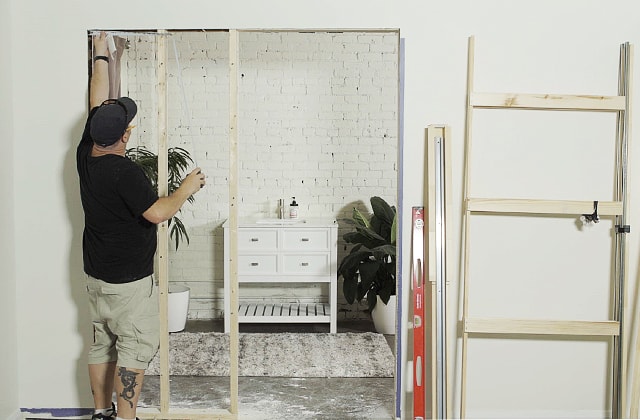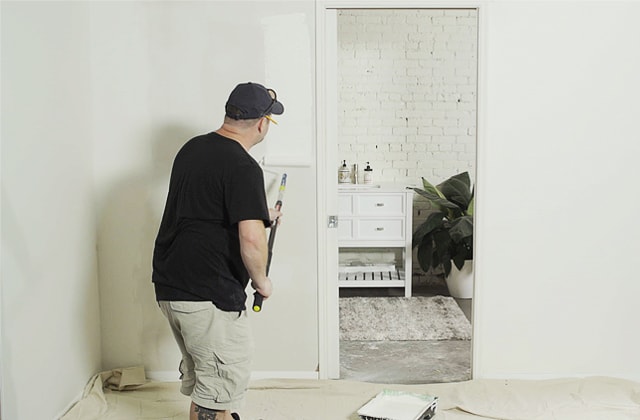1
Measure Everything Out
- 1.1 - Measure the door opening and the adjacent wall to make sure you have enough space.
- 1.2 - Cut the latex seal around the moulding using an all-purpose knife and carefully remove it.
- 1.3 - Remove the doorframe.
- If the pocket door frame is bigger than your door opening:
- 1.4 - Measure the height and width of the pocket door frame and mark it on the wall.
- 1.5 - Trace the full pocket door frame outline on your drywall using a level so you’re cutting as straight as possible.
- 1.6 - Cut along the traced lines using an oscillating tool, then remove the drywall on each side of the wall.





















